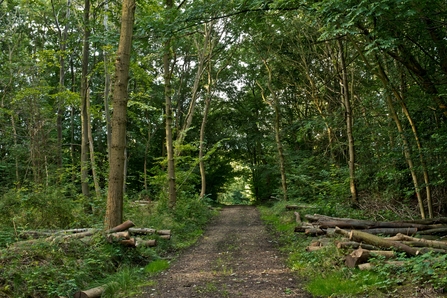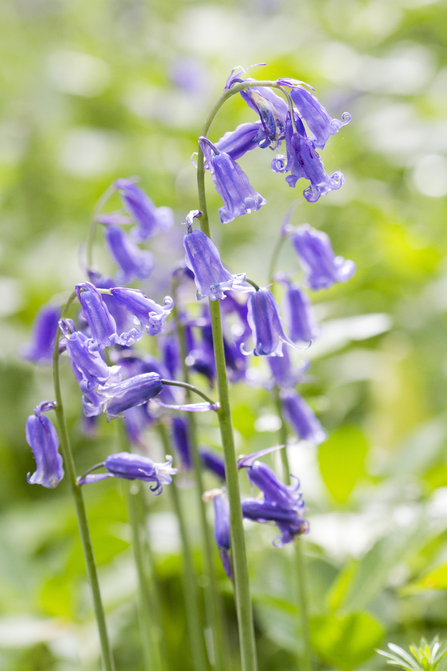
Eaton Wood

Eaton Wood
In 1972, Nottinghamshire Wildlife Trust, then a fledgling charity with no staff or permanent base, launched an audacious appeal to purchase Treswell Wood near Retford. Treswell became the first site ever purchased by the Trust which now cares for dozens of important wildlife areas across the county including the Attenborough Nature Reserve near Beeston & Idle Valley Nature Reserve near Retford.
Five decades on from saving its first woodland the charity is asking its supporters and the public to back efforts to restore the county’s richest and most valuable wildlife habitats. The Trust now cares for over 200 hectares of Ancient Woodlands across the county, including Treswell Wood and near neighbours, Eaton & Gamstom Woods on the outskirts of Retford to Ploughman Wood between Lowdham & Lambley and Bunny Old Wood (West) famed for its bluebell displays in the south of the county.

Bluebells at Bunny Old Wood (West)
Whilst the woods in the charity’s care have been saved from destruction due to ploughing, intensive forestry or development, the charity faces new pressures to ensure that they can thrive in the face of new threats such as tree diseases, pests, pollution and climate change.
Our ancient woodlands provide safe havens for wildlife and help limit the impact of climate change by reducing the risks from flooding and locking away huge amounts of carbon.Erin McDaid, Head of Communications and MarketingNottinghamshire Wildlife Trust
Speaking about the urgent call for at least £25,000 in donations Head of Communications Erin McDaid said: “Our ancient woodlands provide safe havens for wildlife and help limit the impact of climate change by reducing the risks from flooding and locking away huge amounts of carbon. They also provide vital respite for people in a hectic world but they need regular management to maintain and enhance their value and the costs, especially those due to Ash Dieback are spiralling.”
Whilst wonderful places filled with wildlife, our ancient woodlands are no longer truly ‘wild’, having been managed for hundreds, if not thousands, of years to produce material such as timber for building ships and houses to posts for fencing and traditional charcoal. Without active management their value to wildlife declines.
The Trust says that on top of the cost of maintaining and restoring its woodland habitat additional pressures, particularly those caused by Ash Die Back Disease, are making it difficult to keep pace with the level of work required and to ensure that they can remain open for visitors.
If we fail to maintain the traditional cycle we risk losing delicate flowers such as bluebells and orchids. Woodland butterflies that rely on the flowers would suffer and nesting opportunities for many species of woodland bird would disappear.Erin McDaid, Head of Communications and MarketingNottinghamshire Wildlife Trust
Erin explained: “Ancient woodland habitats have been shaped by countless generations of people producing vital natural materials. If we fail to maintain the traditional cycle we risk losing delicate flowers such as bluebells and orchids. Woodland butterflies that rely on the flowers would suffer and nesting opportunities for many species of woodland bird would disappear. The added impact of Ash Dieback Disease means that in addition to maintaining traditional management across 200 hectares of ancient woodland, we are having to remove large numbers of Ash trees urgently before they become too dangerous to work. If we don’t remove them we could have to close woodlands to keep visitors safe.”
Ancient woodlands, woodlands that are known to have been first recorded in 1600 or earlier, are home to more threatened species than any other habitat in our landscape. Each woodland is unique, having been shaped by local soils and climate and over millennia they have evolved complex habitats which, once lost, cannot be recreated.
Through a technique known as coppicing, small sections of woodland would have been repeatedly cut over a cycle of 7-20 years to produce the different materials, without killing the tree. After coppicing, increased light encourages wild flowers to flourish on the woodland floor but as the trees regrow, these become crowded with shade-tolerant species like brambles unless the management cycle starts over.
Traditional ‘coppice’ management ensures that clearings remain within the woodland for wildflowers, such as the iconic bluebell, and insects like butterflies to flourish (which in turn feeds the birds). The lush regrowth also protects ground-nesting birds, while any dead and decaying timber feeds fungi and is a gold mine for bats, invertebrates, woodpeckers and dormice.
Timber from Ploughman Wood, between Lowdham & Lambley, was also used to produce bobbins for Nottingham’s lace-making industry but as modern materials replaced traditional timber, the ancient craft of coppice management declined and many woodlands became more and more shaded and countless woods were ploughed, overplanted or built on.
Ancient woodlands dwindled from around 15% in 1086 to less than three percent of our landscape today.
Once our ancient woodlands have gone, they are gone forever, there is no bringing them back.Erin McDaid, Head of Communications and MarketingNottinghamshire Wildlife Trust
Erin added: “Once our ancient woodlands have gone, they are gone forever, there is no bringing them back. For fifty years Nottinghamshire Wildlife Trust has been saving and caring for some of our county’s finest woodlands but as we face up to the nature and climate crisis our challenge is to protect, restore and reconnect those that remain, and we need urgent help so we can take the action necessary to ensure future generations can enjoy our precious ancient woodlands too.”
Details about the charity’s Save our Ancient Woodlands Appeal can be found on the appeal web page here.